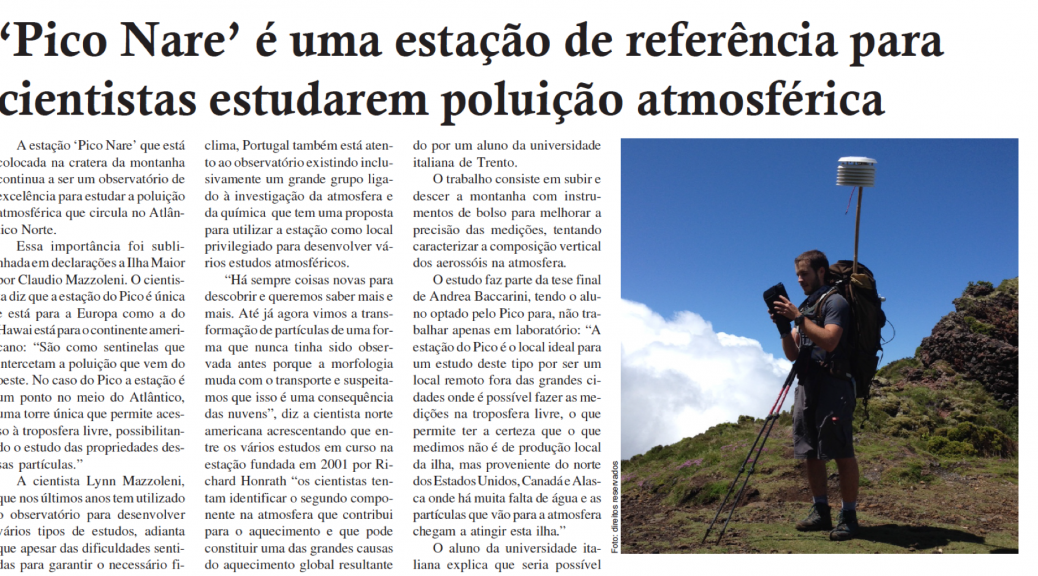Andrea Baccarini, Claudio Mazzoleni and Lynn Mazzoleni were interviewed by David Borges, a local newspaper reporter in Madalena, in July 2015. Here’s the newspaper story that resulted from our talk.
Published on September 4, 2015 (Versão em Português Disponível)
This story was translated using Google Translate.
‘Pico NARE’ is a reference station for scientists to study atmospheric pollution
Written by David Borges, Ilha Maior
The station ‘Pico NARE’ that is placed in the mountain crater remains an observatory of excellence to study air pollution that flows in the North Atlantic.
This importance was underlined in a statement to Ilha Maior by Claudio Mazzoleni. The scientist says that Pico is unique and is to Europe as Hawaii is to the American continent: “They are like sentinels that intersect each other pollution coming from the west. In the case of Pico it is a point in the middle of the Atlantic, a unique tower that provides access to the free troposphere, allowing the study of the properties of these particles. ”
The scientist Lynn Mazzoleni, which in recent years has used the observatory to develop various types of studies, said that despite the difficulties to ensure the necessary funding the observatory will not close. According to the scientist at Michigan Tech, in addition to the United States’ interest in all that relates to the climate, Portugal is also aware of the Observatory; there is even a large group linked to the investigation of the atmosphere and the chemistry that has a proposal to use station as a privileged place to develop various atmospheric studies.
“There are always new things to discover and want to know more and more. So far, we have already seen the transformation of particles in a way that had never been observed before because the morphology changes with transport and we suspect that it is a consequence of the clouds,” the North American scientist says. Adding that among the various ongoing studies at the station founded in 2001 by Richard Honrath, “scientists try to identify the second component in the atmosphere that contribute to warming and that can be a major cause of global warming resulting from fires or other types of combustion.”
In addition to this work, one of the currently ongoing studies at the ‘Pico NARE’ is being developed by a student of the Italian University of Trento.
The work consists of going up and down the mountain with portable instruments to improve the accuracy of measurements, trying to characterize the vertical composition of aerosols in the atmosphere.
The study is part of the final thesis for Andrea Baccarini, the student who opted to work at Pico and not only work in the laboratory: “Pico is an ideal place for such a study because it is a remote location outside the major cities where it is possible to make measurements in the free troposphere, which allows to make sure that what we measure is not spot on the island production, but from the northern United States, Canada and Alaska where there is a lot of lack of water and the particles that go to atmosphere get to reach this island. ”
The student of the Italian university said it would be possible to carry out the job at Pico Mountain, because the instruments can go in your backpack. However, he clarifies that the ‘Pico NARE’ station contributes to more accurately compare and confirm measurements with those of portable instruments.
Andrea Baccarini does not know when he will have to present conclusions, but he expects that by the end of the year have been able to work all the collected data and he will present the results as soon as possible.
See also – Story by Andrea Baccarini
